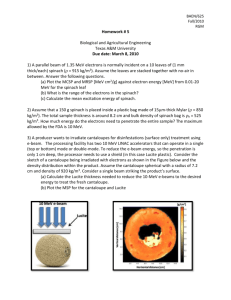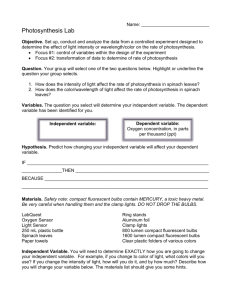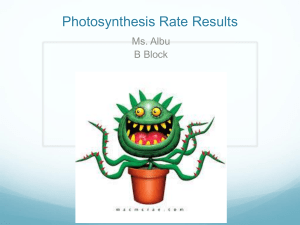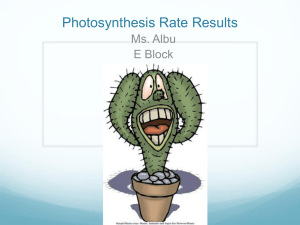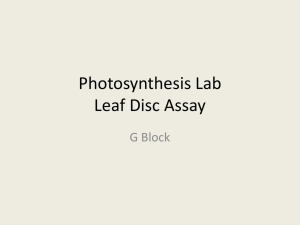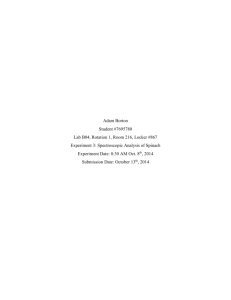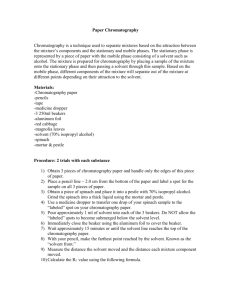Spinach Lab Objective To determine whether "fresh" packaged
advertisement
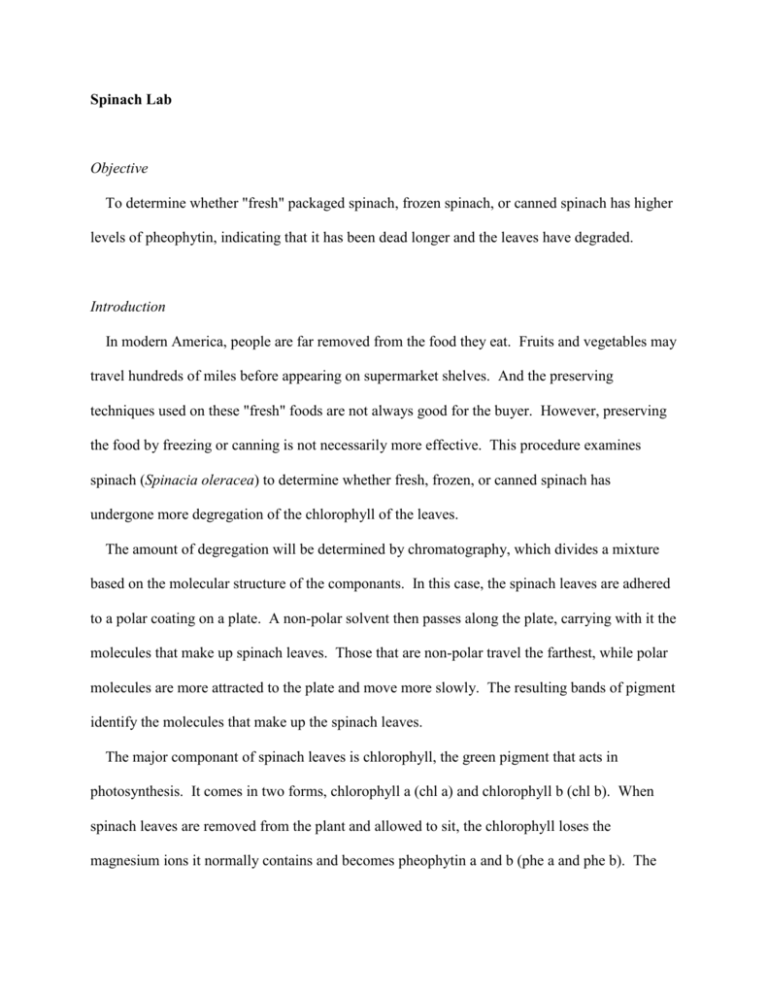
Spinach Lab Objective To determine whether "fresh" packaged spinach, frozen spinach, or canned spinach has higher levels of pheophytin, indicating that it has been dead longer and the leaves have degraded. Introduction In modern America, people are far removed from the food they eat. Fruits and vegetables may travel hundreds of miles before appearing on supermarket shelves. And the preserving techniques used on these "fresh" foods are not always good for the buyer. However, preserving the food by freezing or canning is not necessarily more effective. This procedure examines spinach (Spinacia oleracea) to determine whether fresh, frozen, or canned spinach has undergone more degregation of the chlorophyll of the leaves. The amount of degregation will be determined by chromatography, which divides a mixture based on the molecular structure of the componants. In this case, the spinach leaves are adhered to a polar coating on a plate. A non-polar solvent then passes along the plate, carrying with it the molecules that make up spinach leaves. Those that are non-polar travel the farthest, while polar molecules are more attracted to the plate and move more slowly. The resulting bands of pigment identify the molecules that make up the spinach leaves. The major componant of spinach leaves is chlorophyll, the green pigment that acts in photosynthesis. It comes in two forms, chlorophyll a (chl a) and chlorophyll b (chl b). When spinach leaves are removed from the plant and allowed to sit, the chlorophyll loses the magnesium ions it normally contains and becomes pheophytin a and b (phe a and phe b). The magnesium ions can also be removed in the lab. In this experiment, each type of spinach is analyzed through chromatography as it is and with magnesium ions removed. If the two patterns are the same, that indicates that most of the magnesium ions were already removed and the spinach degraded before it was purchased. However, if they differ, this may indicate that the spinach is less degraded. It is hypothesized that fresh spinach leaves will be less degraded than those which have been frozen or canned and thus that they will have more chlorophyll and less pheophytin. Methods First the fresh spinach was analyzed. Half a gram of spinach was mixed with half a gram of anhydrous magnesium sulfate (to remove the water from the leaves) and one gram of sand. This was ground to a fine powder and mixed in a vial with two mililiters of acetone by vigorous shaking to extract the pigments from the leaves. The mixture was allowed to separate and the solvent was transfered to another vial, being filtered through a Kimwipe. This was the leaf extract (e). Three hundred microliters of the leaf extract was transferred to another vial and mixed with a tenth of a gram of Dowex 50WX8 H+ resin. This was allowed to stand, mixing occasionally, to remove the magnesium ions from the chlorophyll. Then the solvent was transferred to another vial, and labelled demetallated leaf extract (d). The two samples were placed on a thin layer chromatography (TLC) plate, each on a labelled dot about a centimeter from the bottom of the plate. A third dot was added with beta carotene to provide a baseline. The dots were allowed to dry and reapplied to provide a dark pigment. Then the plate was suspended in a TLC chamber which contained approximately half a centimeter of solvent in the bottom. The plate stood in the solvent for ten minutes, allowing the solvent to move upwards and separate the pigment. The results were observed in natural light and under UV light. This procedure was repeated with canned and frozen spinach. Results The following table shows the distance each major pigment travelled and the rate at which the pigment moved up the plate is reported as Rf, which was found by dividing the distance the pigment moved by the distance the solute front moved. Fres he Fres hd Solut Xanthop e hyll Front (cm) (cm) Rf Xanthop hyll Chl b Rf Chl a Rf Phe (cm) Chl b (cm) Chl a b (cm) Rf Phe b Phe a Rf (cm) Phe a 7.3 1.5 0.21 2.5 7.3 1.6 0.22 n/a 0.34 3.4 0.47 5 0.68 5.7 0.78 3.4 0.47 5.8 0.79 6.5 0.89 Cann ed e Cann ed d Froz en e Froz en d 6 0.4 0.07 1 0.17 2.3 0.38 4.4 0.73 5.3 0.88 6 0.7 0.12 1 0.17 2.3 0.38 4.4 0.73 5.3 0.88 6 1.7 0.28 2 0.33 2.8 0.47 3.5 0.58 4.4 0.73 6 1.7 0.28 2.1 0.35 3 0.5 4.1 0.68 4.7 0.78 Discussion Canned spinach looked exactly the same before and after demetallation. This implies that it went through a great deal of degredation before being purchased and had entirely demetallated on its own. The frozen spinach had more variation - the original extract had more bands than the demetallated one, implying more variation in the molecular compounds of the leaf and possibly less degradation. The fresh spinach also had variation in the rates of movement of pheophytin a and b between the original extract and the demetallated extract, so it too was not entirely degraded before purchasing. The poor results on the fresh spinach plate are probably due to not using enough dye and make it difficult to compare the fresh and frozen spinach. However, these preliminary results support the hypothesis to some extent by showing that fresh and frozen spinach are both less degraded than canned spinach. The data for the plates under UV light is not pictured above, but the pheophytin fluoresced while the chlorophyll did not. Perhaps the metal ions prevent the chlorophyll from fluorescing. The Rf values for beta-carotene are also not shown, because they were all virtually one. It is the most nonpolar molecule in the spinach and moved the farthest, practically at the rate of the solute. Pheophytin was next most polar, and chlorophyll was more non-polar, with b being more polar than a in both types. Xanthophyll was the most polar molecule of all and barely moved off the initial dot (its Rf values are not shown either). This is clear because the film on the plate is polar and the solvent is non-polar. The polar molecules are attracted to the film and don't move much with the solvent; the nonpolar molecules are attracted to the solvent and move far because the plate does not hold them back. To make the polar molecules travel the farthest, all that would be necessary would be to make the solvent polar and the film non-polar. This is also why TLC plates cannot be marked with ink, because ink includes pigment molecules that would be attracted by the solute and move up the plate, contaminating the sample.

